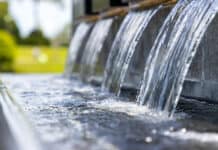Established in 1993, International World Water Day is held annually on March 22 as a means of focusing attention on the importance of freshwater and advocating for the sustainable management of freshwater resources.
An international day to celebrate freshwater was recommended at the 1992 United Nations Conference on Environment and Development (UNCED). The United Nations General Assembly responded by designating March 22, 1993 as the first World Water Day.
Each year, World Water Day highlights a specific aspect of freshwater. In 2009, the theme for World Water Day is “Shared Water – Shared Opportunities”. Special focus will be placed on transboundary waters. Nurturing the opportunities for cooperation in transboundary water management can help build mutual respect, understanding and trust among countries and promote peace, security and sustainable economic growth. The United Nations Educational, Scientific and Cultural Organization (UNESCO) leads the activities of the World Water Day 2009 with the support of United Nations Economic Commission for Europe (UNECE) and the Food and Agriculture Organization of the United Nations (FAO).
Most facility managers are aware of the strategies and equipment that can be implemented to reduce water usage in their buildings. Still, here is a reminder about just a few things that can be done. Falcon Waterfree Technologies, a manufacturer of waterfree urinals, offers the following tips.
Repair or replace leaking fixtures: A small steady leak can waste 60,000 gallons of water per year. Such a leak can go undetected in a flush urinal because the water is spread across the back of the bowl and difficult to see. A stuck flush valve on one urinal can waste 12,000 gallons per week.
Reuse drinking bottles: It takes 3 liters of water to produce 1 liter of bottled water (2 liters to manufacture the plastic bottle and 1 liter to fill it). Each re-use of a bottle saves 2 liters of water (Pacific Institute).
Install waterfree urinals: Join the ranks of organizations such as Dodger Stadium, Bank of America Tower in NYC, and Cisco Systems that are saving billions of gallons every year. Besides saving water, greenhouse gases are reduced. Water transport and treatment is an energy intensive process. On average, every billion gallons of water saved avoids the generation of 18 million pounds of CO2 (Pacific Institute).
More strategies and other resources for water saving equipment can be found through the EPA’s WaterSense program.


















![[VIDEO] Collect Asset Data at the Speed of Walking a Building](https://facilityexecutive.com/wp-content/uploads/2024/02/maxresdefault-324x160.jpg)
Comments are closed.